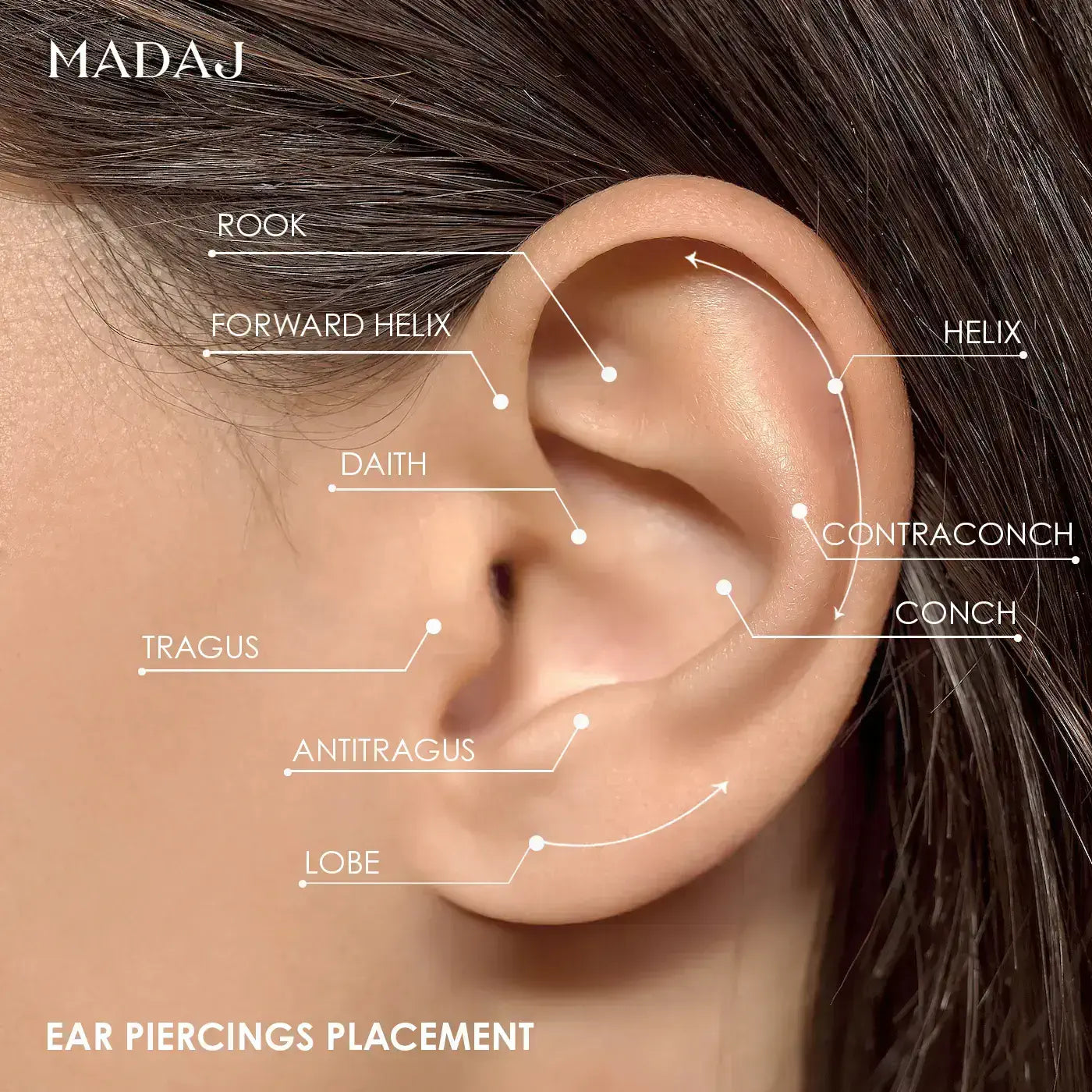Education
EAR PIERCING PROCEDURE & AFTERCARE
In this complete guide on the ear piercing procedure and aftercare, written by our professional piercers, you will find all the essential information to properly prepare and take care of your piercing.
Discover how an ear piercing session goes, the healing times associated with each area of the ear, and the aftercare required for your piercing after the procedure.
Before fully enjoying the beauty of your future diamond piercing, it is crucial that you are fully informed about the best practices in piercing to avoid any complications.

EAR PIERCINGS PROCEDURE
To help you prepare for your appointment with the piercer, here are the detailed steps your professional will follow to perform your piercing:
- Sterilization of Equipment: The piercer uses sterilized, single-use needles and equipment to ensure impeccable hygiene.
- Protection and Hygiene: The piercer wears a new pair of disposable gloves to avoid contamination.
- Ear Cleaning: The ear is thoroughly cleaned with an antiseptic solution to remove any impurities.
- Marking the Placement: A mark is made to indicate the exact spot where the piercing will be performed.
- Piercing and Jewelry Insertion: The needle is used to create the hole, followed by the insertion of the chosen jewelry.
The process is carried out quickly, but with great precision, to minimize discomfort and ensure optimal healing.

EAR PIERCING HEALING TIME
The healing time for ear piercings varies depending on the pierced area and individual factors such as overall health and aftercare. Generally, ear piercings can be classified into three healing time groups:
- 2 to 4 months: Lobe piercings
- 4 to 6 months: Upper cartilage piercings
- 9 to 12 months: Tragus and other complex areas
Factors Affecting Healing:
Diet, overall health, genetics, and proper aftercare all play a crucial role in healing.
Tips:
- Do not change your jewelry until the piercing is fully healed.
- If jewelry change is necessary, have it done by a professional piercer.
- Regularly monitor the piercing for signs of infection (redness, swelling, discharge). If symptoms occur, consult a professional.

EAR PIERCINGS AFTERCARE ADVICES
- Clean Twice a Day : Clean your piercing at least twice daily using a saline solution. This helps to prevent infection and promotes healing.
- Gentle Cleaning : Use a clean cotton swab or gauze soaked in saline solution. Carefully clean around both sides of the piercing. Avoid rotating the jewelry.
- Keep It Dry : After cleaning, gently pat the area dry with a clean, disposable paper towel.
- Check the Jewelry : Ensure that the jewelry is secure, but avoid unnecessary manipulation.
- Saline Solution : The best option for cleaning piercings.
- Avoid Harsh Chemicals : Do not use alcohol, hydrogen peroxide, or antibacterial soaps as they can irritate the piercing.
- Touching the Piercing : Avoid touching the piercing with unclean hands. Bacteria from your hands can cause infection.
- Submerging in Water : Avoid swimming in pools, hot tubs, lakes, or oceans during the initial healing period as these can harbor bacteria and other harmful organisms.
- Contact with Products : Keep hair sprays, perfumes, and lotions away from the piercing site.
- Sleeping on the Piercing : Try not to sleep on the pierced ear to avoid pressure and irritation.

EAR PIERCINGS FULL GUIDE
If you would like to learn more about a specific area of the ear, check out our detailed guides by ear area for complete information. Here are the available guides:
